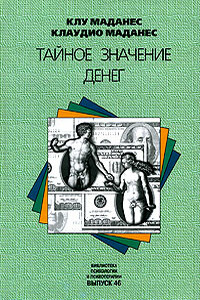1 (1).
Wack, P. 1985a. «Scenarios: shooting the rapids». Harvard Business Review 63 (6):139-50.
Wack, Pierre. 1985b. «Scenarios: Uncharted Waters Ahead». Harvard Business Review 63.
Wade, Nicholas. 2010. «A Decade Later, Genetic Map Yields Few New Cures». New York Times, June 12.
Wadler, Joyce. 2010. «The No Lock People». New York Times, Jan 13.
Wasserman, N., B. Anand & N. Nohria. 2010. «When Does Leadership Matter?» In Handbook of Leadership Theory and Practice, ed. N. Nohria and R. Khurana. Cambridge, MA: Harvard Business Press.
Watts, D. J., P. S. Dodds & M. E. J. Newman. 2002. «Identity and search in social networks». Science 296 (5571^1302-5.
Watts, D. J. & S. H. Strogatz. 1998. «Collective dynamics of „small-world“ networks». Nature 393 (6684^440-2.
Watts, Duncan J. 1999. «Small Worlds: The Dynamics of Networks Between Order and Randomness». Princeton: Princeton University Press.
Watts, Duncan J. 2003. «Six Degrees: The Science of A Connected Age». New York: W. W. Norton.
Watts, Duncan J. 2007. «A 21st Century Science». Nature 445:489.
Watts, Duncan J. & Peter Sheridan Dodds. 2007. «Influentials, networks, and public opinion formation». Journal of Consumer Research 34:441-58.
Weaver, Warren. 1961. «A quarter century in the natural sciences». Public Health Reports 76:57–65.
Weimann, Gabriel. 1994. «The Influentials: People Who Influence People». Albany, NY: State University of New York Press.
Whitford, Josh. 2002. «Pragmatism and the Untenable Dualism of Means and Ends: Why Rational Choice Theory Does Not Deserve Paradigmatic Privilege». Theory and Society 31 (3^325-63.
Wolfers, Justin & Eric Zitzewitz. 2004. «Prediction Markets». The Journal of Economic Perspectives 18 (2):107-26.
Wortman, Jenna. 2010. «Once Just a Site With Funny Cat Pictures, and Now a Web Empire». New York Times, June 13.
Wright, G. & P. Goodwin. 2009. «Decision making and planning under low levels of predictability: Enhancing the scenario method». International Journal of Forecasting 25 (4^813-25.
Zelditch, Morris. 1969. «Can you really study an army in the labora-tory». A sociological reader on complex organizations : 528-39.
Zheng, T., M. J. Salganik & A. Gelman. 2006. «How many people do you know in prison? Using overdispersion in count data to estimate social structure in networks». Journal of the American Statistical Association 101 (474):409.
Zuckerman, E. W. & J. T. Jost. 2001. «What Makes You Think You’re so Popular? Self-Evaluation Maintenance and the Subjective Side of the „Friendship Paradox“». Social Psychology Quarterly 64 (3):207-23.




